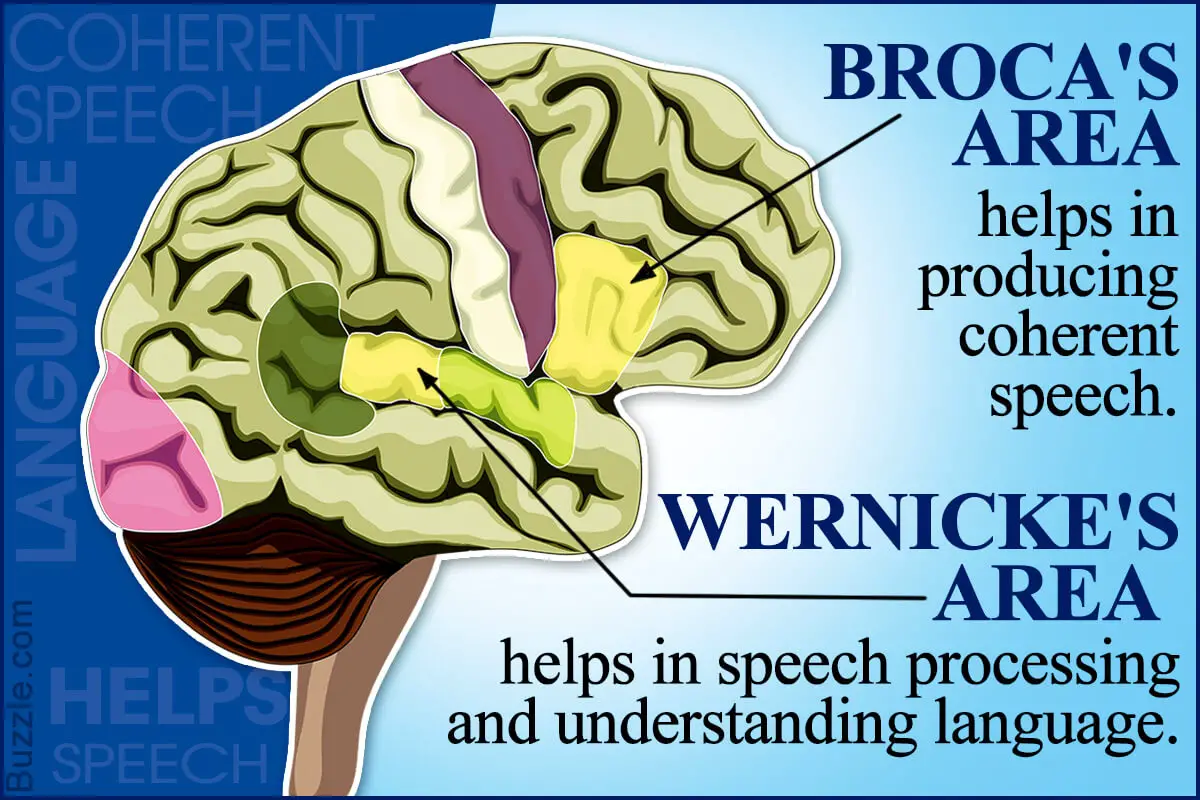Brain Areas Involved in Language and Speech
Language and Speech are Coordinated in Specific Areas of Association Cortex
 Figure X-1. | Source: Bodytomy Opens in new window
Figure X-1. | Source: Bodytomy Opens in new window
The ability to communicate by language Opens in new window, verbally and in writing, is one of the most difficult cognitive functions to study because only humans are capable of these skills.
Thus, our knowledge of language processing in the brain has been inferred from clinical data by studying patients with aphasias Opens in new window—disturbances in producing or understanding the meaning of words—following brain injury, surgery, or other damage to the cerebral cortex.
Two areas appear to play an important role in language and speech:
- the Wernicke area Opens in new window, in the upper temporal lobe, and
- the Broca area Opens in new window, in the frontal lobe.
Both of these areas are located in association cortex, adjacent to cortical areas that essential in language communication.
The Wernicke area is in the parietal-temporal-occipital association cortex, a major association area for processing sensory information from the somatic sensory, visual, and auditory cortices.
The Broca area is in the prefrontal association cortex, adjacent to the portion of the motor cortex that regulates movement of the muscles of the mouth, tongue, and throat (i.e., the structures used in the mechanical production of speech).
A fiber tract, the arcuate fasciculus, connects the Wernicke area with the Broca area to coordinate aspects of understanding and executing speech and language skills.
Clinical evidence indicates that the Wernicke area is essential for the comprehension, recognition, and construction of words and language, whereas the Broca area is essential for the mechanical production of speech.
Patients with a defect in the Broca area show evidence of comprehending a spoken or written word but are not able to say the word. In contrast, patients with damage in the Wernicke area can produce speech, but the words they put together have little meaning.
Language Opens in new window is a highly lateralized function of the brain residing in the left hemisphere.
This dominance is observed in left-handed as well as right handed people. Moreover, it is language that is lateralized, not the reception or production of speech. Thus, native signers (people who use sign language) who have been deaf since birth still show left-hemisphere language function.

